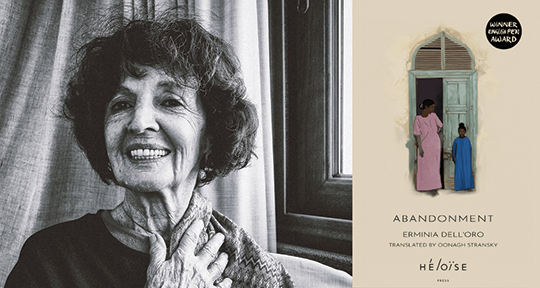For her translation of Erminia Dell’Oro’s Abandonment, Oonagh Stransky received one of the prestigious PEN Translates awards in 2023; one year later, this powerful, lyrical novel is due to arrive by way of Héloïse Press on September 15. Rendered into English with great sensitivity and intimacy, Abandonment tells the story of a mother-daughter pairing in Eritrea, and their alienation from both local and the colonial Italian communities in the aftermath of racial laws. Stransky fought for its appearance in the English-language for twenty years, and in the following essay, she speaks on the emotional, introspective process of translating this tremendous work, and why she has remained so determined that the world should read it.

It’s July 2024, and I’ve received the proofreader’s notes for Abandonment. I need to reply to an issue with the passage below:
“Then Sellass felt a deep languor come over her and she understood that her body was dissolving into the seawater, that the wave she had become was returning towards the light and slowly breaking on a beach where the shades of the dead had gathered. Even Mariam’s shells were there, specks of darkness on the sand, and a hand reached out to grab them. The wave tried to speak, to tell her that she was Sellass, but the voice was only a watery gurgle, and the shades, going through the gestures of life, ignored the coming and going of the wave.”
The proofreader says
This is a bit confusing—reads to me like the wave is speaking to Sellass, but if I’ve understood correctly the wave IS Sellass? And she’s trying to speak to Mariam? I think the confusion is using “she” to refer to the wave, if it read ‘to tell her that it was Sellass’ it would be clearer.
I reply
Using “it” does fix the problem but ambiguity and the gendering of the wave are important to both story and style. Actually, the original Italian doesn’t say that the wave is trying to speak to Mariam. It just says, L’onda tentava di parlare, di raccontare che lei era Sellass. . . I suggest modifying that line to: The wave tried to speak, to say she was Sellass. . . This keeps the female gender of the wave and retains an element of ambiguity.
In my dreams I reply like this
The world of this book is filled with objects that we readers might commonly see as neutral but that are attributed gender by characters who need them to survive, who see their fragile lives building and then crumbling, over and over, casually, randomly, like waves. Sellass in this instance is indeed the wave, and because the wave in Italian is a feminine noun, she is both wave and girl. More than trying to address Mariam here, Sellass is receiving a message from the universe that she is a mere mortal, that she coexists with death, with the shades. Her daughter, Marianna, will be made aware of her own mortality, but she is accepting of it, which in turn allows her to survive and not become a victim; this awareness is the key to her resistance.
READ MORE…



